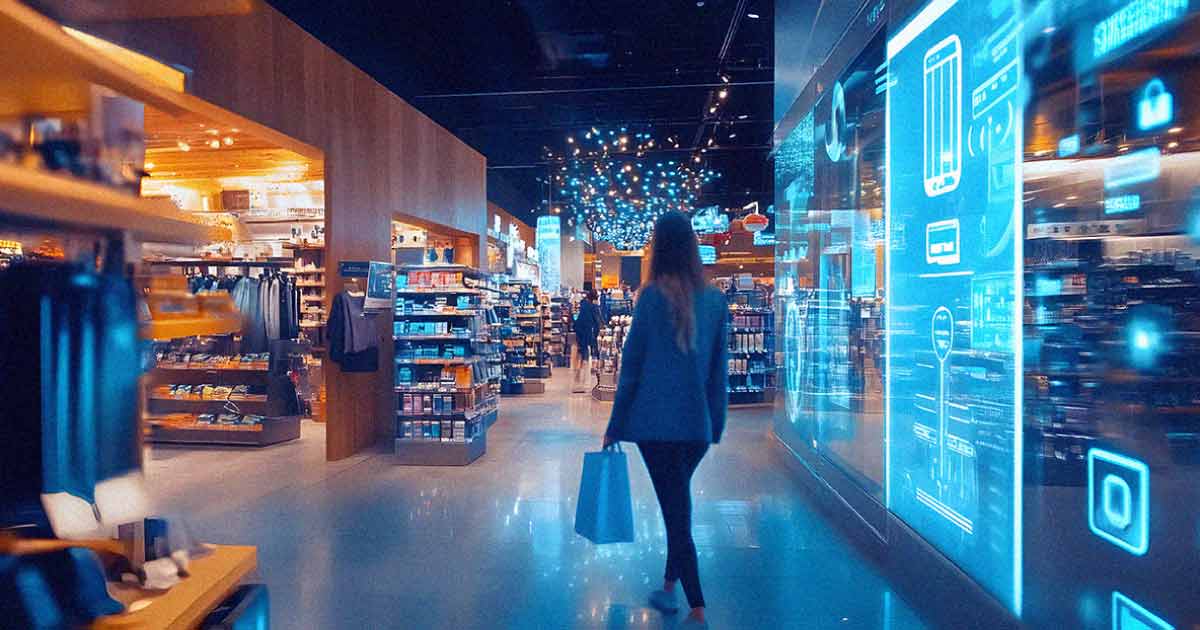If anything, retailers are evolving the in-store experience to adapt better to deliver more connected and engaging customer journeys.
However, “connected” can be a tricky challenge for all the usual reasons surrounding the seamless customer experience discourse – data silos, misaligned teams, inventory visibility, and technology that has people and processes struggling to keep pace are just a few.
Contributing to the customer journey
It’s been decades; customer journeys are far from linear. No customer moves neatly from awareness → consideration → purchase → loyalty.
In fact, customers now weave in and out of stages; the journey is dynamic and multi-touch. This added layer may add complexity, but it also presents an opportunity.
According to recent data, companies with strong omnichannel customer engagement showed 9.5% growth as compared to only a 3.4% year-over-year increase in annual revenue by those that have not fully leveraged omnichannel capabilities.
Yet, the omnichannel conversation can often veer to focus predominantly on digital and social channels. This tendency can be attributed to the depth of the digital footprint of customers through data trails collected online.
In-store gets points for being an experience zone – the ability to experience products via touch and feel, but also offers an opportunity to engage with trained people who could offer expert advice.
Giving store assistants the ability to access information quickly and accurately about customers’ preferences while they’re with them brings one of the best features of the online experience to the in-store one.
When integrated with the omni-channel approach, it means customers can click, call, or visit – letting brands find customers when they want it most.
Best of both worlds
Retailers often struggle to unify systems, deliver seamless journeys, and meet rising customer expectations for convenience and relevance.
Dorosh, having experienced the shifts through his career first-hand, offers a way ahead. There are two ways to do this, he explains, one is to direct customers who come into the store to the website – it’s called Endless Aisle.
Dorosh adds, “It’s subtle. So, the customer will visit the store to review a refrigerator, for instance, and we will place the order from the website, and it will be delivered to the customer’s home the next day. Here, the delivery experience is similar regardless of whether it’s a partner store or a brand store.”
The other option is to buy online, pick up in-store (BOPIS). Here, if a customer orders it online but doesn’t want to wait for a day to get it delivered, they have the option to come to the store and pick it up on the same day. “Customers can pick a store closer to their location, and we ensure that it’s in stock,” he says.
“When this happens, it’s beneficial for us because the customer will browse and end up picking up a couple of more things like a watch, or a case, etc,” he adds. Sounds like a win-win.
Stay agile in a fast-changing market
When looking to purchase a television, customers will visit; to review all options at first, to get a demo, to compare features and benefits between the products shortlisted and finally, to get the deal.
One cannot reject the fact that, in between store visits, these customers would continue their research online to compare between brands and product features to find the best fit. The ultimate decision is based on the customer profile and preference.
Profile refers to the life stage, and older age groups prefer the personal relationship built with the promoter.
Customer behaviour is changing
The way that people shop is changing. As live social shopping gains momentum, one of the most celebrated insights is the opportunity to capture shoppers in a “high-intent moment.” In-store makes the same argument – the customer has already made the effort to drive to the store, and hence, intent is high.
Are brands ready to tap into this opportunity to add the convenience of online, with the experience of in-store?
Omnichannel in the true sense must mean ensuring that in-store is a channel that matches the energy of other channels, and marketing, operations and technology teams join forces to make this a practical reality.
It’s a long game, far from the fleeting metric wins of performance marketing, and one that is measured by looking at a compounded lifetime value of the customer. “When looking to scale the business, my biggest advice is to look at the retention rather than the transactional development,” says Dorosh.
ALSO READ: How Can Brands Escape the AI-Sameness Trap?










































































































